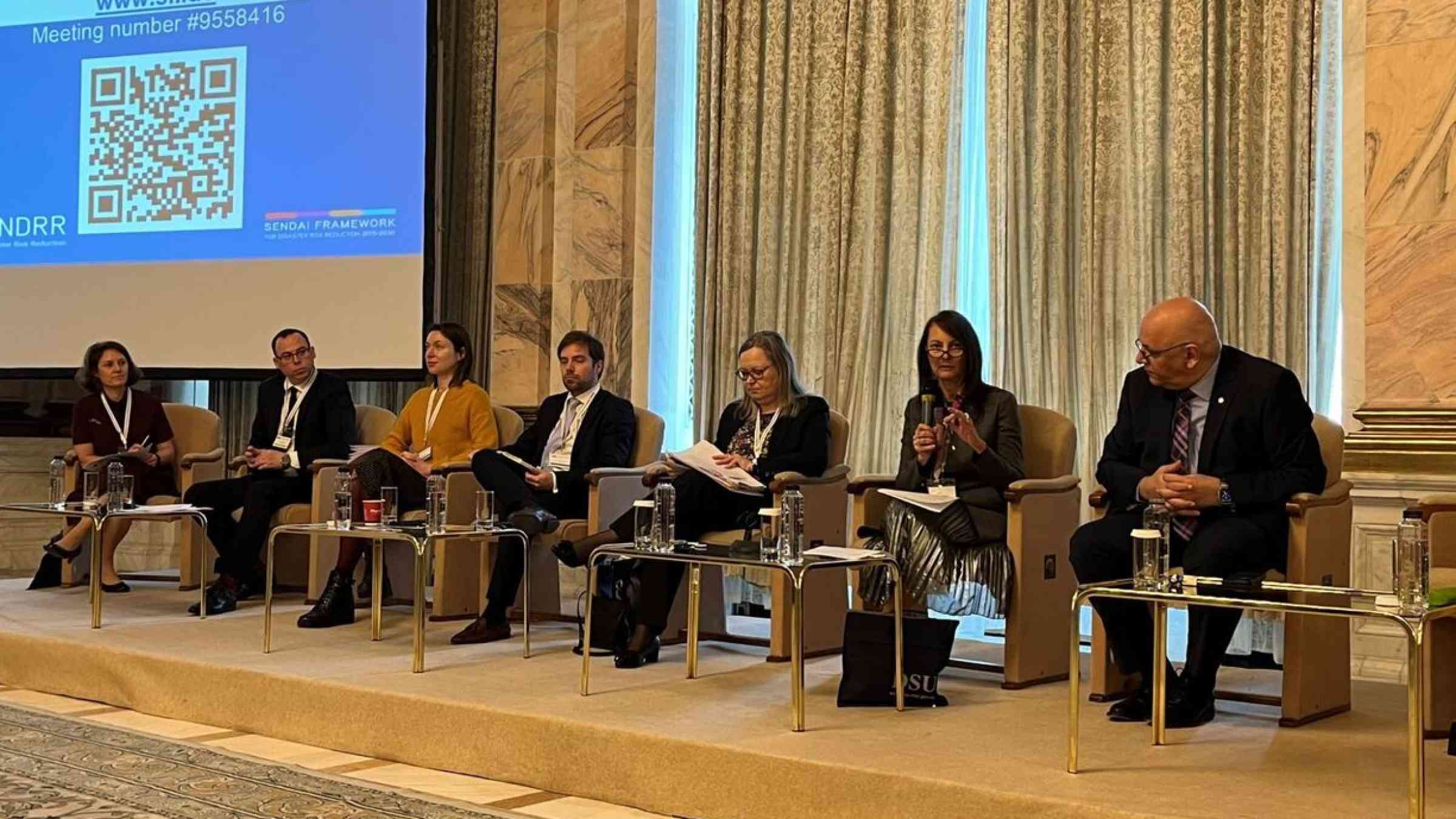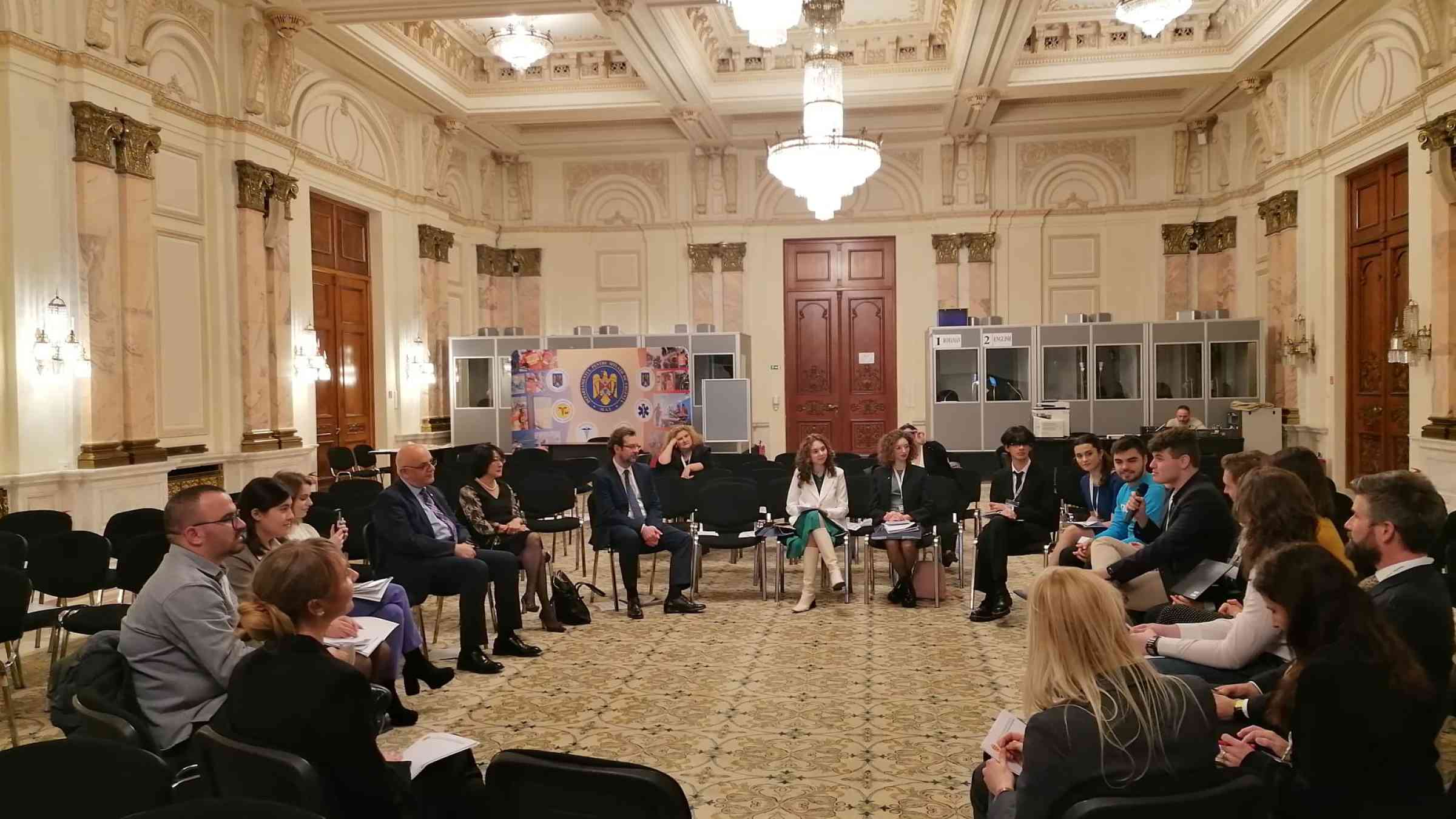European policy dialogue results in commitment to better disaster risk communication for all

European governments must include effective risk communication in their disaster risk reduction plans, making science-based information more understandable to more people, leaders agreed at a two-day meeting in Bucharest last week.
The recent COVID-19 pandemic and climate change crises have shown how misinformation and disinformation can spread fast through online and physical channels, which puts people who buy into them at risk and can create risks for others.
Hosted by the Romanian government, from February 23 to 24, and supported by the UN Office for Disaster Risk Reduction (UNDRR), the meeting, which is part of a series of Action-Oriented Dialogues to take forward the regional Roadmap for Disaster Risk Reduction 2021-2030, discussed the vital importance of strengthening evidence-based and accessible risk information for reducing disaster risks.
The event was attended by leaders and representatives of civil protection authorities from across the region, the European Commission, the Council of Europe, the media, civil society groups, and experts.
People must have access to the correct, science-based information about risk, participants recognized. This information must be trusted, relevant, timely, accurate, and easy to understand to elicit actions that can reduce risks.
The Bucharest event aimed to set out a path for making risk language more accessible to all, including younger generations. Participants agreed on the need to invest in youth education and preparedness now, so that we can ensure the societal resilience of the future.

Participants also discussed transboundary cooperation, committing to accelerate the implementation of the Sendai Framework for Disaster Risk Reduction (2015-2030), an important international agreement to reduce disaster risks and losses.
The speakers highlighted the links between community engagement and risk data management, proposing to train younger generations to identify misleading information on social media. The media also have a key role to play in delivering credible and timely information to the public.
Other recommendations include mapping risk information, monitoring risk communication, and involving scientists more directly in communication with the public.
Participants committed to establish a regional knowledge hub on risk communication and to produce a new set of guidelines as part of UNDRR’s series of Words info Action guides. Building on existing good practices, participants pledged to collaborate on raising risk awareness through the Union Civil Protection Knowledge Network and to find the necessary technical and financial support for putting communication risk policies into practice.